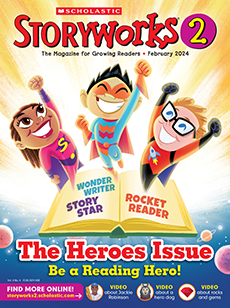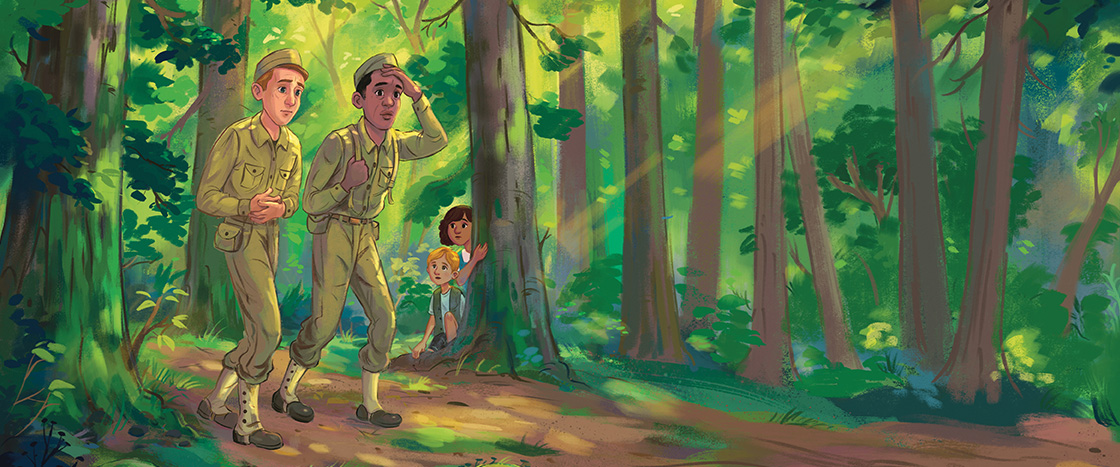Long ago, two soldiers walked through the woods.
They were coming home.
They had just fought in a war.
They hadn’t eaten for days. They were famished. They had passed many villages on their way. At each one, they had asked for food. But no one would feed them.
The first soldier stopped. “Look, another village!” he said. “Maybe they will share some food with us!”
“They won’t,” said the other soldier. “No one has given us food so far. No one has any food to share.”
“But we could try,” said the first soldier.
Nearby, some children overheard them.
“Those soldiers look hungry,” said Michael. “But my family doesn’t have any food to share. We only have a few turnips.”
“We only have a few potatoes,” said Jane.
Suddenly, a soldier said, “Do you hear voices?”
The children ran back to the village.

